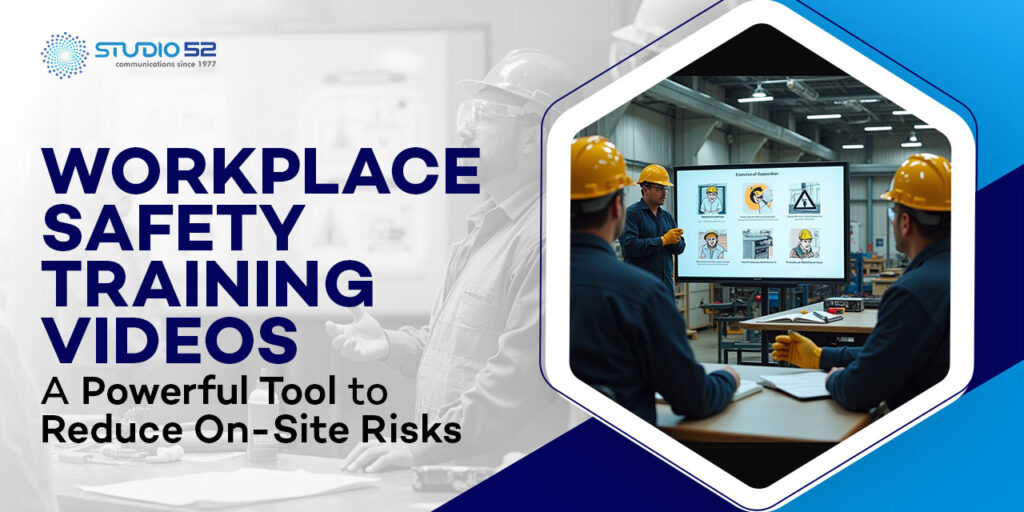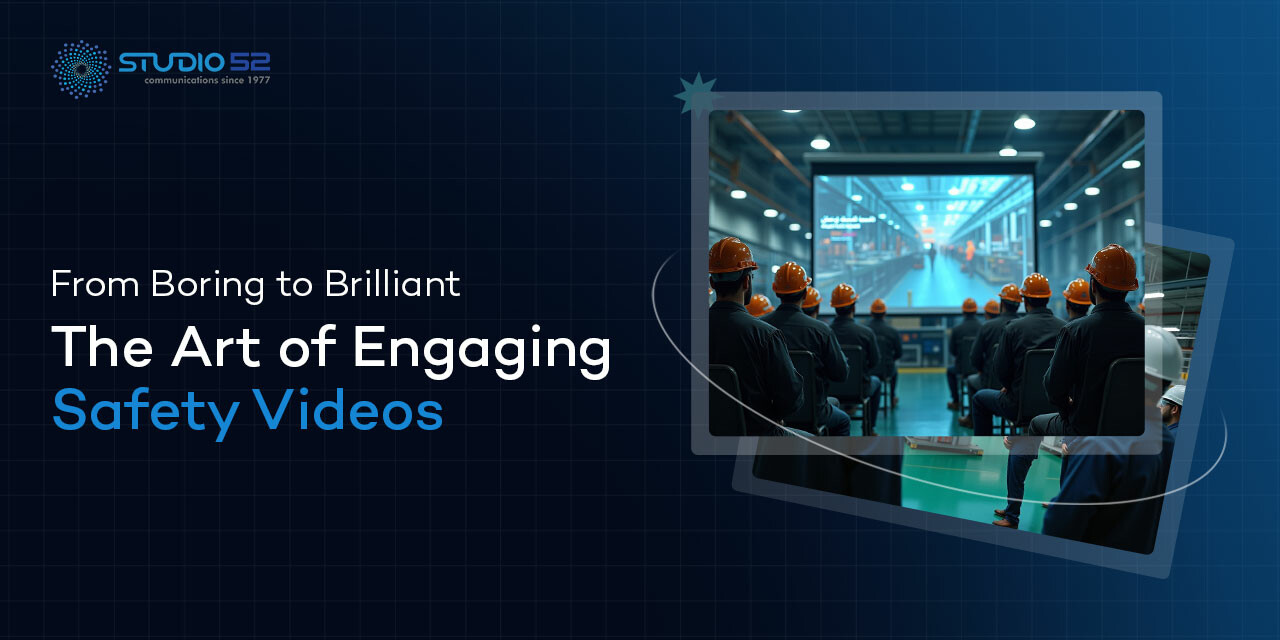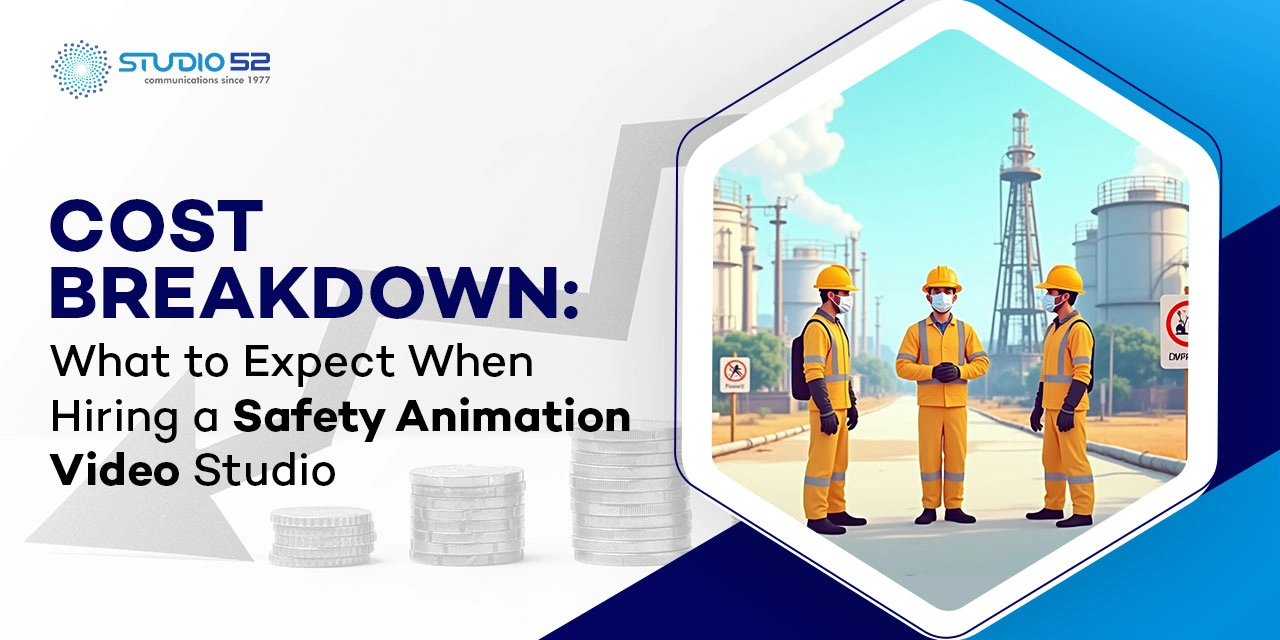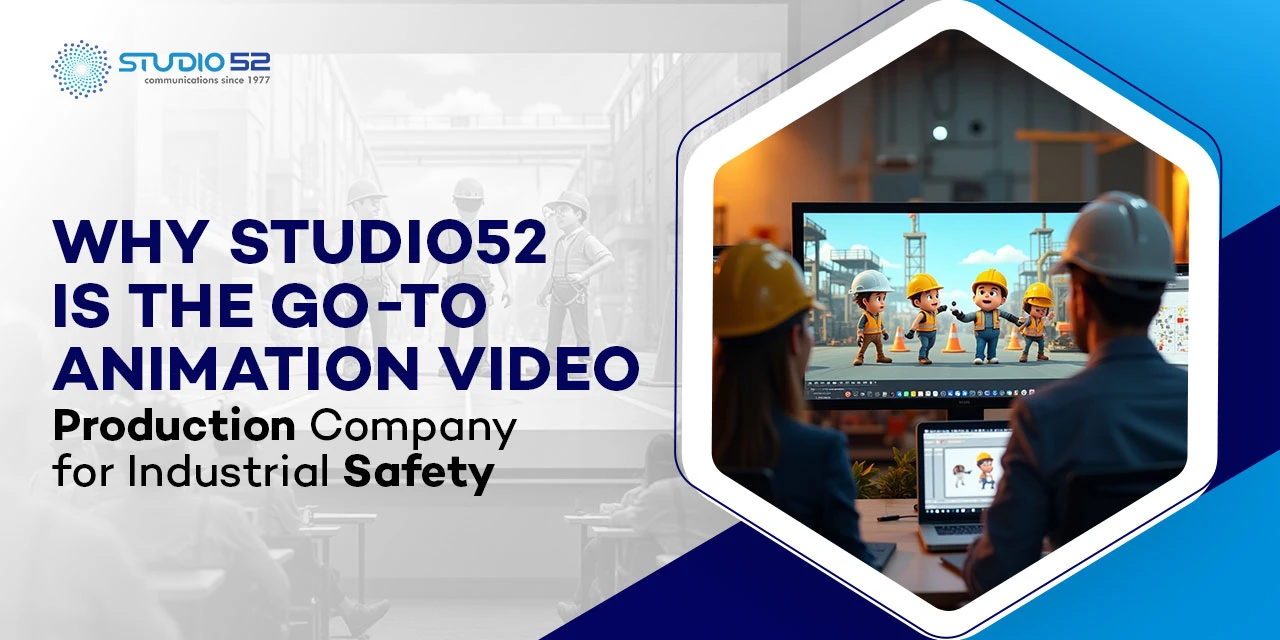Workplace safety training videos are revolutionizing how organizations educate employees, enhance safety standards, and cultivate a culture of proactive risk reduction across various industries. Leveraging strategies and insights from sector leaders like Studio52, this comprehensive guide explores the practical, creative, and operational benefits of safety training videos, outlining proven methods to maximize their effectiveness.
Table of Content
The Importance of Workplace Safety Training Videos
Videos are an essential tool for engaging employees, demonstrating procedures, and making critical safety information memorable. Unlike text-heavy manuals and static presentations, videos capture attention through dynamic visuals, animation, dramatizations, and real-life scenarios, all of which improve retention and promote safer workplace behaviors.
- Visual learning simplifies complex safety concepts for employees at all levels.
- Videos offer consistency, ensuring standardized training across departments and locations.
- Utilizing multimedia formats inspires active learning and reduces training fatigue.
Key Elements of Effective Safety Training Videos
1. Customization
Not all organizations face the same risks—customized safety training videos allow companies to address specific hazards, compliance needs, and work environments. A tailored video narrative ensures relevance and employee engagement, making workplace safety training more effective and relatable.
- Capture real scenarios unique to your workflow to make the content relatable.
- Use industry-specific examples and equipment to highlight relevant risks.
- Employ interactive segments, such as quizzes and scenario-based choices, to reinforce learning.
2. Animation, Simulation, and Interactivity
Animated safety videos and real-time simulations not only illustrate protocols but also simulate emergencies, making procedures clear and repeatable.
- Dramatized incidents and solutions engage viewers, boosting retention by as much as 64% compared to traditional training.
- Interactive simulations help staff practice responses and develop muscle memory.
3. Quizzes and Feedback
Integrating quizzes with video content allows for measurable learning outcomes.
- Pre-tests and post-tests identify gaps in knowledge and assess retention.
- Immediate feedback motivates employees and clarifies misunderstood concepts.
4. Regular Updates and Scalability
Frequent updates to safety videos ensure compliance with evolving regulations and incorporate new best practices.
- Use video editing and interactive image-building software to quickly refresh content.
- Standardized videos support scalable onboarding and refresher programs for new hires across locations.
Step-by-Step Guide to Producing Impactful Safety Training Videos
Step 1: Identify Hazards and Training Needs
Begin by auditing workplace risks and incident reports to determine the training focus.
- Interview safety officers and review past accident records to prioritize topics.
Step 2: Design Engaging Visual Storyboards
Work with safety experts and professional video producers to script concise, actionable content.
- Storyboard scenarios that walk through step-by-step procedures for hazard recognition, emergency responses, and PPE usage.
- Use graphics and infographics to structure complex information visually.
Step 3: Produce Videos with High-Quality Visuals and Sound
Leverage professional filming, editing, and animation to create immersive, clear, and appealing videos.
- Animation and dramatization make protocols memorable and relatable.
- Use voiceovers and captions for accessibility and clarity across language and literacy levels.
Step 4: Incorporate Interactive Elements
Use branching paths in video training for employees to choose responses at crucial moments.
- Embed quizzes and prompts for feedback after each module.
- Simulated decision-making and scenario analysis deepen practical understanding.
Step 5: Monitor, Update, and Scale
Regularly review training effectiveness through analytics and staff feedback.
- Schedule periodic updates as regulations change or new equipment is introduced.
- Extend video platforms to mobile devices and remote locations for maximum reach.
Explore our complete Guide to Workplace Safety: How to Build a Zero-Injury Workplace and learn essential strategies, training methods, and best practices to create a safer, accident-free work environment.
Real-World Impact: Case Studies and Industry Best Practices
Many organizations, ranging from construction to healthcare, have utilized safety training videos to achieve measurable improvements in workplace safety.
- Construction Site Induction Videos: Demonstrate harness protocols, machinery operation, and site-specific hazards, resulting in fewer accidents and more rapid onboarding.
- Healthcare Training: Infection control videos model correct sanitation procedures and emergency response, reducing workplace-related illnesses.
- Warehouse Operations: Animated videos teach lifting techniques, safe handling of hazardous materials, and emergency procedures, enforcing compliance and protecting worker health.

Benefits of Video-Based Safety Training
Benefit |
Details |
| Improved Engagement | Employees are more attentive and motivated. |
| Higher Retention | Visuals and dramatized scenarios aid memory longer than text-based instructions. |
| Consistent Training Experience | Ensures everyone receives the same safety instructions. |
| Cost-Effectiveness | Reduces need for repeated live training sessions. |
| Immediate Compliance | Standardized videos quickly bring new hires up to date. |
| Simpler Audit and Inspection Preparation | Videos support documentation for regulatory compliance. |
| Workplace Culture Improvement | Establishes shared responsibility for safety. |
The Fundamentals of Safety Retraining by OSHA
Studio52 also creates retraining videos as mandated by OSHA. Retraining comes into the picture when the employee changes his company, in which case his workplace changes. It is also compulsory if the employee changes the type of respirator he uses -in that scenario, his previous training is outdated. Specifically, retraining is required if
- In the case of a new assignment where the workplace has different respiratory hazards compared to the earlier one
- The worker forgets his earlier training which is often the scenario if the respirator is only used a few times in a year.
- If the supervisor notes that the employees are not using the respirator in a proper manner
Training portability is accepted from employer to employer within 12 months, and exemption comes into play from basic respirator training.
The Role of Professional Video Production
Partnering with skilled production teams and safety consultants brings considerable value to video training.
- Experts simplify technical instructions and ensure legal compliance.
- Professional storytelling and visuals maximize viewer focus and comprehension.
- High-quality deliverables save costs in the long run by preventing injuries and reducing turnover.
Innovations in Workplace Safety Training Videos
Leading safety video providers, such as Studio52, utilize advanced techniques:
- 2D & 3D Animation: For technical demonstrations, accident simulations, and equipment walk-throughs.
- Dramatized Scenarios: Role-playing and re-enactments showcase proper and improper practices.
- Documentary Style: Real employee testimonials and site footage increase authenticity and trust.
- Interactive Images: Embedded in videos to supplement quizzes, feedback, and scenario-based learning.
Guidelines and Tips for Effective Safety Video Integration
- Use induction videos for new employees to set an immediate safety-conscious tone.
- Supplement regular toolbox talks and safety meetings with bite-sized video segments.
- Solicit employee feedback on video content for continuous improvement and relevance.
- Maintain a library of safety videos, updated regularly for compliance and emerging risks.
Conclusion:
Workplace safety training videos represent one of the most effective strategies for ensuring employee well-being and operational integrity across industries. Through engaging, customized, and consistently updated workplace training videos, organizations can reduce incidents, enhance compliance, and foster a deep-rooted culture of safety training in the workplace. Investing in cutting-edge video solutions not only protects people—it boosts productivity, morale, and long-term business success.
To partner with experienced professionals in safety video production and transform your workplace training program, explore the service offerings provided by expert teams like Studio52. Our capability in producing compelling, industry-specific work safety training videos ensures your team receives clear, practical guidance tailored to real operational risks. These customized visuals support effective workplace hazard training, giving your workforce the tools they need for ongoing safety, awareness, and excellence.





